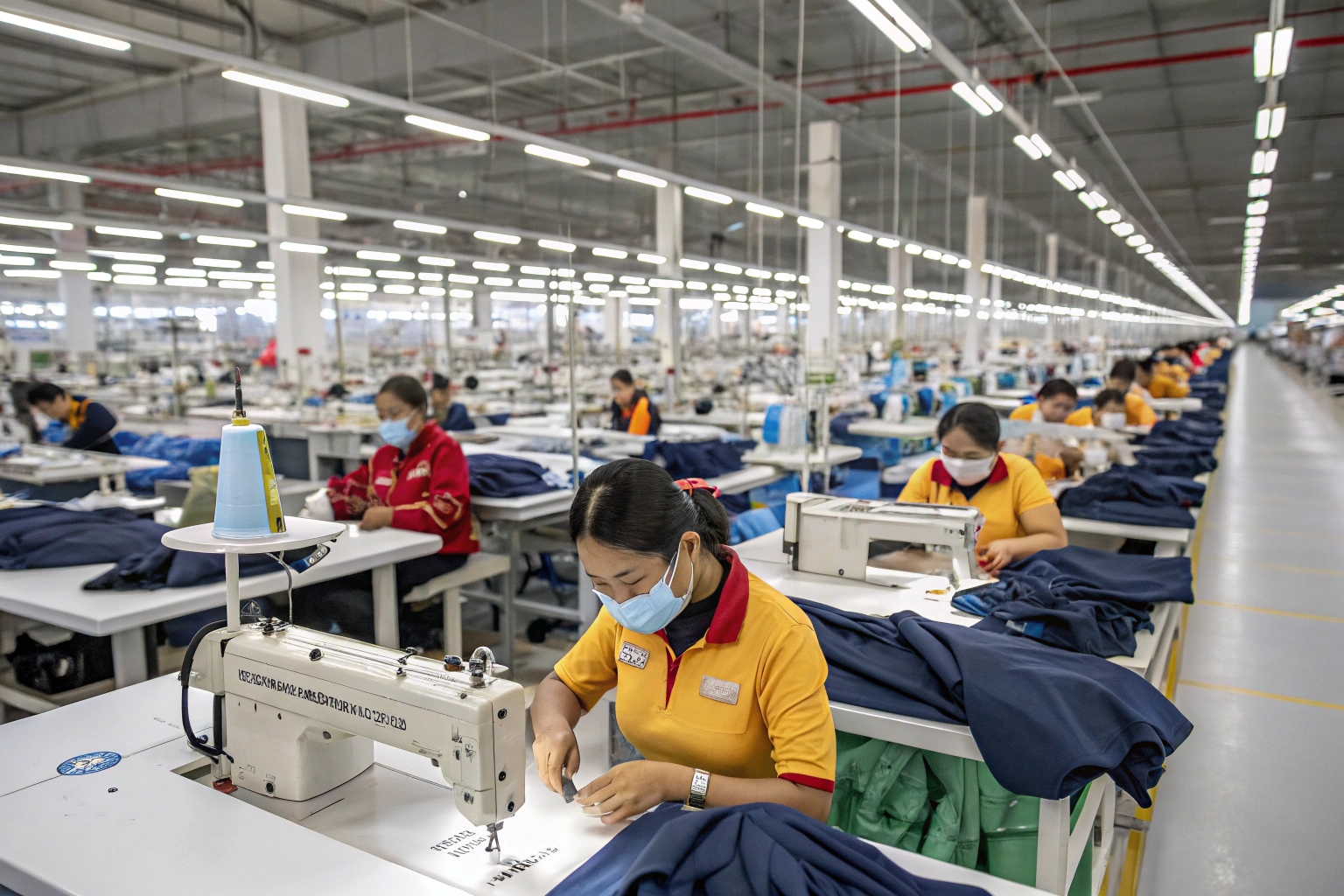Many fashion buyers are shocked to discover that even luxury brands don’t always own their own factories. The reality behind where clothes are made is complex—and worth understanding if you’re in the apparel business.
Most fashion brands manufacture their clothes in developing countries like China, Vietnam, Bangladesh, and India through outsourced factories. Only a few luxury houses own full in-house production lines.
I’ve spent years dealing with garment factories, OEMs, and brand clients, and I’ve seen firsthand how brands choose where and how their products are made. Let me walk you through it.
Which countries produce clothes for big brands?
Most people assume high-end brands manufacture their clothes in Europe or the U.S., but that’s rarely true. When you look at the labels on your favorite clothing brands, you’ll often find tags that read “Made in Bangladesh” or “Made in Vietnam.”
Big brands produce their clothing in countries like China, Vietnam, Bangladesh, India, Turkey, and Indonesia because of low labor costs, developed supply chains, and export incentives.
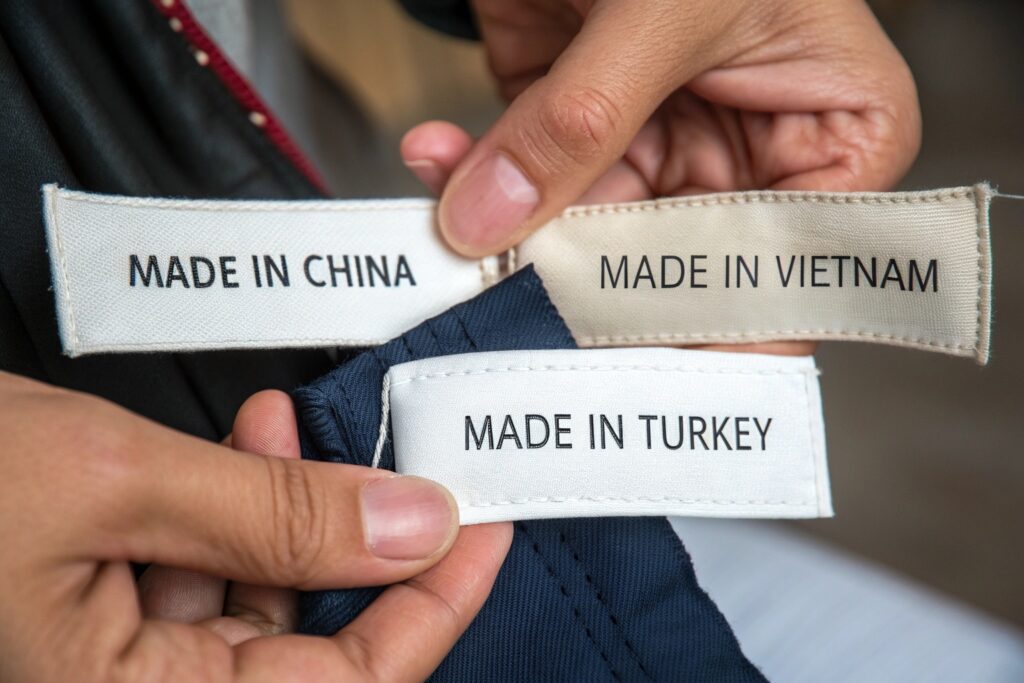
China
China remains the global leader in clothing exports. It offers:
- Massive textile production capacity
- High-speed manufacturing and logistics
- A wide range of fabrics, accessories, and trims
Even though labor costs have increased, China still dominates in premium kidswear, outerwear, and fully customizable garments.
Bangladesh
Bangladesh is a production hub for basic fashion:
- Home to some of the world’s largest garment factories
- Offers very competitive labor rates
- Ideal for T-shirts, shirts, leggings, and jeans
Many U.S. and European fast fashion brands like H&M, Zara, and Primark source from Dhaka.
Vietnam
Vietnam has become a serious player in global fashion sourcing:
- Known for stable political environment and trade agreements with the U.S. and EU
- High-quality stitching and strong compliance
- Especially good for outerwear and sportswear
India
India supplies both luxury and fast fashion buyers:
- Strong in natural fibers like cotton and linen
- GOTS-certified organic factories for babywear
- Also offers small-batch artisanal production
India is especially valuable for ethical fashion buyers who want transparency and handmade touches.
Turkey and Indonesia
These two countries are gaining ground:
- Turkey is favored for its proximity to Europe and quick turnaround
- Indonesia offers cost-effective production and has a growing synthetic textile industry
In summary, most big brands choose production hubs that balance price, speed, quality, and compliance with global labor standards.
Do luxury fashion brands own their factories?
People often assume that a luxury brand like Gucci or Chanel must make every product in its own facility. But even in the high-end market, that’s not always the case.
Most luxury brands outsource parts of their production, although some own or partly control factories for critical product lines like handbags, suits, or leather goods.
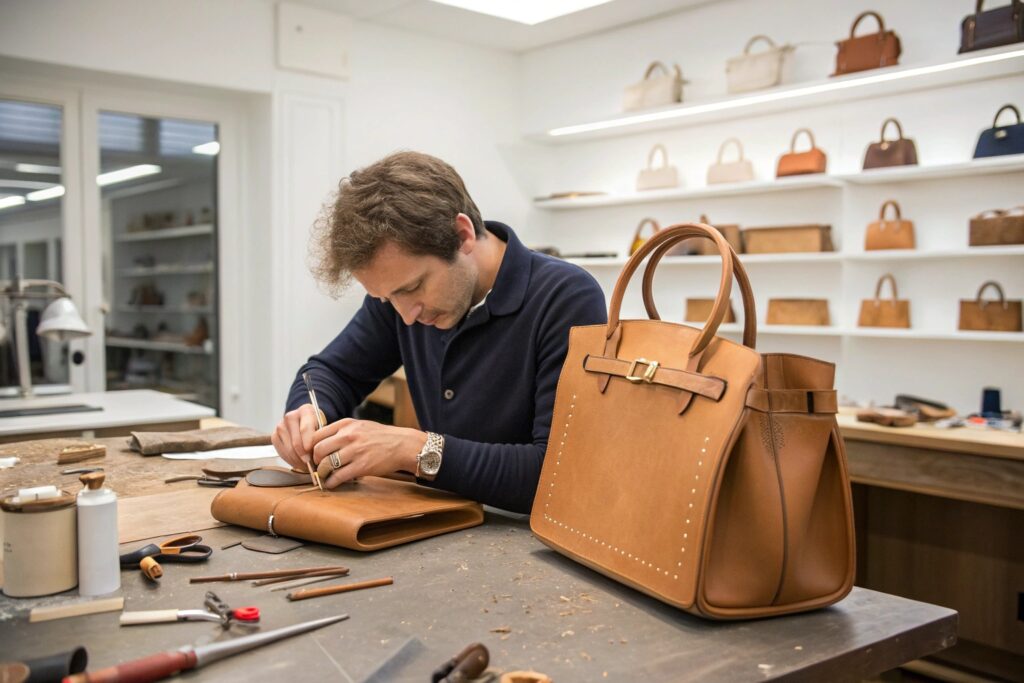
In-House vs. Outsourced
Some luxury houses—especially heritage brands—do invest in owning their own production lines. For example:
- Hermès owns multiple leather goods ateliers in France
- Louis Vuitton has its own manufacturing facilities for key product lines
But in reality, full ownership is rare. More commonly, luxury brands work with trusted manufacturers:
- Exclusive OEMs with NDAs in place
- Family-run artisanal workshops in Italy or France
- Independent high-quality Asian factories
Quality Control is Key
What makes luxury brands different isn’t just where they manufacture—it’s how they control the process:
- Strict oversight with brand quality inspectors
- Tiered supplier audits and sustainability guidelines
- Vertical integration for critical items (shoes, leather bags)
For example, luxury brands may own final-assembly or finishing facilities while outsourcing earlier sewing or dyeing processes to smaller certified factories.
Case Examples
| Brand | In-House Production? | Outsourcing? |
|---|---|---|
| Chanel | Yes (for high jewelry, handbags) | Yes (some ready-to-wear) |
| Prada | Owns some factories | Partners with small Italian suppliers |
| Gucci | Owns strategic factories | Also uses third-party workshops |
| Dior | Mix of in-house and outsourced | Strict quality control |
So, even for luxury, the model is more hybrid than purely in-house.
Where do fast fashion brands make garments?
Fast fashion is all about speed and scale. The business model demands frequent design changes and massive volumes at low costs. That shapes where brands like H&M, Zara, and Shein produce their clothing.
Fast fashion brands manufacture most of their garments in countries like Bangladesh, China, Turkey, Vietnam, and India to benefit from low costs, short lead times, and bulk capacity.
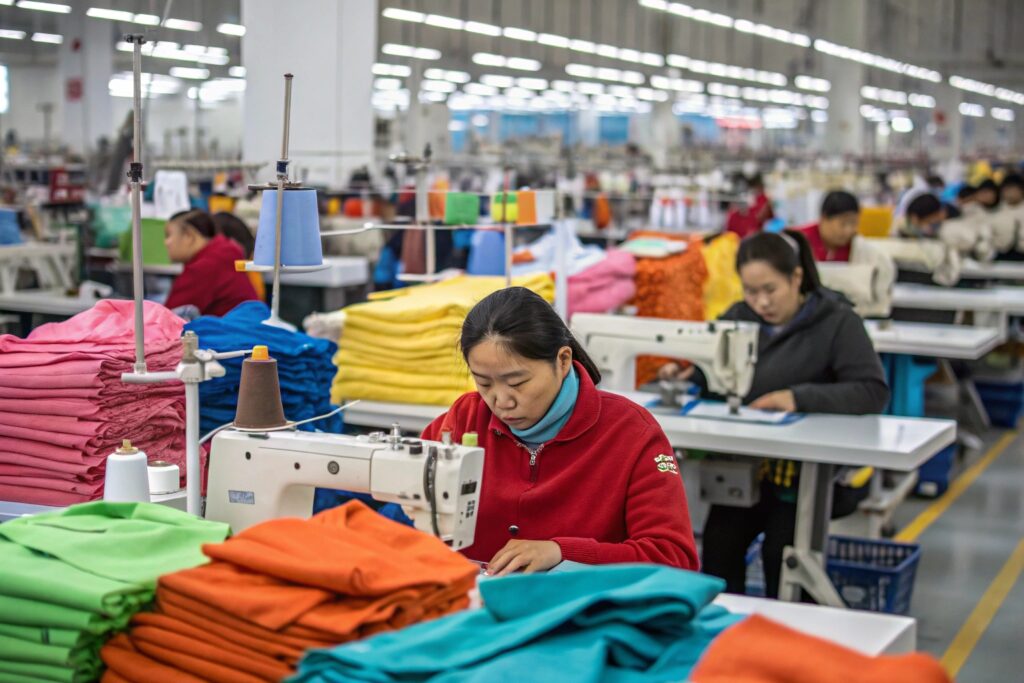
The Fast Fashion Formula
Brands like Zara release new styles every two weeks. To meet that demand, they need:
- Reliable manufacturers with flexible capacity
- Close geographic proximity to large consumer markets
- Materials sourcing built into factory zones
Bangladesh
This country plays a central role due to:
- Ultra-low labor costs
- Established export incentives
- Dozens of mega factories capable of producing over 500,000 units monthly
China
Still strong despite rising labor costs:
- Superior speed and automation
- Access to every type of fabric and trim
- Ideal for printed garments, coats, and accessories
Turkey
Favored for European distribution:
- Fast shipping to EU
- Good for reactive fashion—styles that shift weekly
India & Vietnam
Increasingly used for more complex or ethical product lines. Many brands allocate their more conscious collections (organic, natural dye, GOTS-certified) to these regions.
Logistics & Technology
Many of these countries now integrate:
- Real-time production dashboards
- Barcode and RFID tracking
- App-based QC reports
So fast fashion is not just about cheap production anymore—it’s about fast, flexible, and trackable manufacturing.
Are Asian factories the top choice for brands?
Some buyers still ask if brands are “moving away” from Asia. While there’s growing attention on nearshoring, the fact is: Asia still dominates.
Yes, Asian factories remain the top choice for brands due to cost-efficiency, material availability, skilled labor, and mature supply chains.
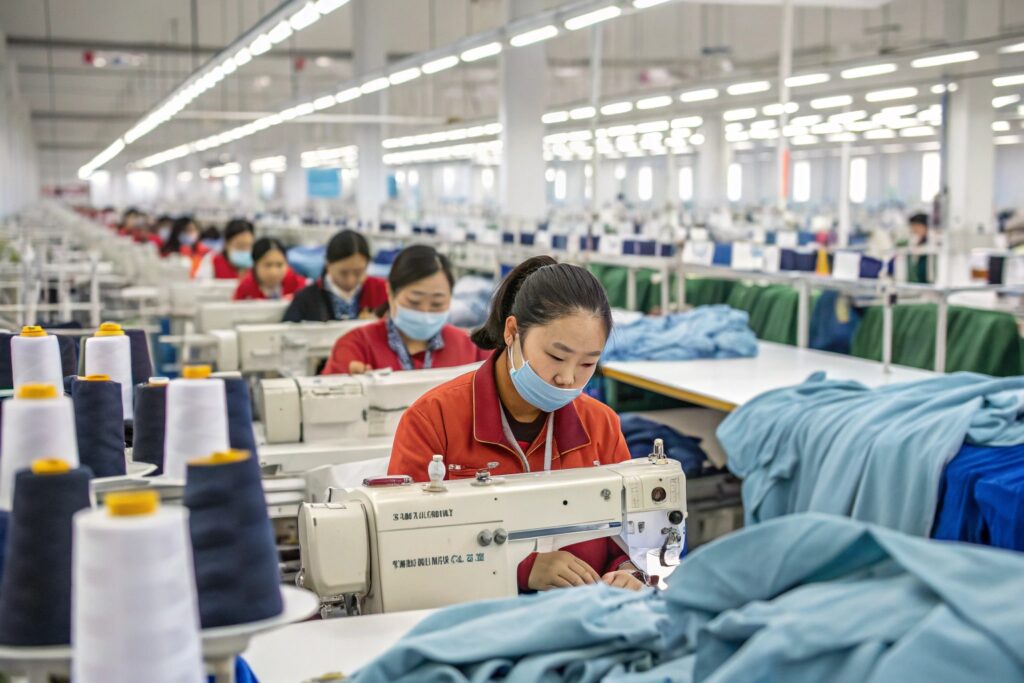
Why Asia Still Rules
- Scale: Factories in China and Bangladesh can handle tens of thousands of pieces per day
- Speed: Sampling, printing, cutting, sewing, and packing all happen under one roof
- Raw Materials: Many fabric mills are located close to cut-and-sew operations
- Infrastructure: Export ports, bonded warehouses, and logistics platforms are world-class
Misconceptions
It’s common to hear phrases like “brands are moving away from Asia,” but this usually refers to partial reallocation or supplier diversification—not a complete exit.
For example:
- A U.S. brand might keep its Chinese supplier for coats, but try Pakistan for basic T-shirts
- European buyers might add Portugal or Turkey for quick seasonal runs, but still rely on Asia for bulk orders
What Top Brands Do
- Diversify within Asia (e.g., combining Chinese factories for premium, Bangladesh for budget)
- Keep Asian sourcing for core SKUs
- Shift more reactive or seasonal SKUs closer to the target market
So while nearshoring is a trend, Asia continues to be the main engine powering global fashion production.
Conclusion
Fashion brands manufacture their products in Asia because it offers the best balance of cost, capacity, and reliability. Whether luxury or fast fashion, most brands use outsourced factories—with only a few owning production lines. Asian countries like China, Bangladesh, India, and Vietnam remain the backbone of global garment manufacturing.

